Unlocking Investment Potential: Your Comprehensive Guide to Exchange-Traded Funds (ETFs)
Are you looking for a flexible and diversified way to invest in the financial markets? Perhaps you’ve heard about **Exchange-Traded Funds (ETFs)**, but aren’t quite sure what they are or how they fit into an investment strategy. You’re not alone! ETFs have revolutionized how we approach investing, offering a compelling blend of characteristics from both individual stocks and mutual funds. In this comprehensive guide, we’ll demystify ETFs, explore their unique mechanics, uncover their many advantages, and honestly discuss the potential drawbacks and risks. We’ll also delve into the diverse types of ETFs available and see how they compare to traditional investment vehicles like stocks and mutual funds, helping you make informed decisions for your financial future.
What Exactly is an ETF and How Does It Work?
At its core, an **Exchange-Traded Fund (ETF)** is a basket of various **securities**—which can include **stocks**, **bonds**, **commodities**, or even **currencies**—that trades on a stock exchange just like a regular company stock. Think of it as a pre-packaged collection of investments designed to give you broad exposure to a market segment or an entire index with a single purchase. This ingenious structure combines the inherent **diversification benefits** typically found in **mutual funds** with the real-time **trading flexibility** of individual stocks. For instance, instead of buying shares in 500 different companies to track the S&P 500 index, you could simply buy one share of an S&P 500 ETF.
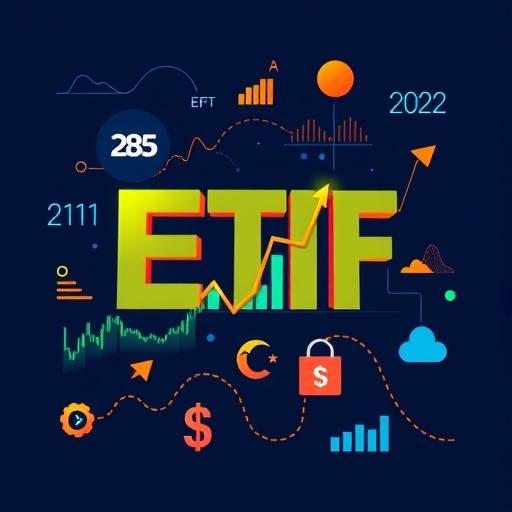
The operational mechanics of an ETF are quite unique. Most ETFs are designed to **track an underlying index** or the performance of a specific asset class. These are known as **passively managed ETFs**, and they aim to mirror the index’s performance, not outperform it. However, there are also **actively managed ETFs** where a fund manager makes decisions on which securities to buy and sell, similar to an actively managed mutual fund. When you invest in an ETF, you become a shareholder, owning a portion of the fund itself, but not directly owning the individual underlying assets within the basket. The ETF provider owns those assets, and you, as a shareholder, may even receive **dividend payments** if the underlying stocks pay them.
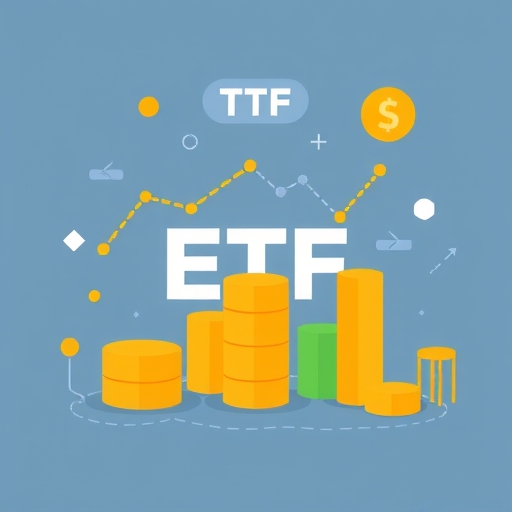
One of the most significant differences between an ETF and a mutual fund lies in its **pricing and trading**. Unlike mutual funds, which are priced only once a day after the market closes, ETFs are priced continuously throughout the trading day, from 9:30 a.m. to 4 p.m. Eastern time. This means you can buy and sell ETF shares at any point during market hours, just like stocks, allowing you to react quickly to market news or price changes. This dual liquidity, stemming from both the primary market (where large blocks of shares are created and redeemed) and the secondary market (where individual shares trade on exchanges), ensures that ETFs are generally very liquid, meaning they can be easily bought or sold. The first US-listed ETF, the **SPDR® S&P 500 ETF (SPY)**, launched in 1993, marking the beginning of this transformative investment vehicle.
To summarize, here are some core characteristics that define most Exchange-Traded Funds, making them a unique investment vehicle:
| Characteristic | Description | Investor Benefit |
|---|---|---|
| Diversified Basket | Holds multiple securities (stocks, bonds, commodities) in one fund. | Reduces single-asset risk and provides broad market exposure. |
| Exchange Traded | Bought and sold on stock exchanges throughout the day, like stocks. | Offers real-time pricing and trading flexibility. |
| Index Tracking | Many passively managed ETFs aim to mirror the performance of a specific index. | Provides predictable exposure to market segments without active management bias. |
| Transparency | Most ETFs disclose their holdings daily. | Investors know exactly what they own, aiding informed decisions. |
The Strategic Advantages: Why Investors are Choosing ETFs
The rapid growth of the global ETF market, now boasting over 11,300 ETFs with assets under management exceeding $14.41 trillion as of October 2024, is a testament to their compelling benefits. Investors, from beginners to seasoned pros, are flocking to ETFs for a variety of strategic advantages that can significantly enhance a **portfolio** and investment strategy.
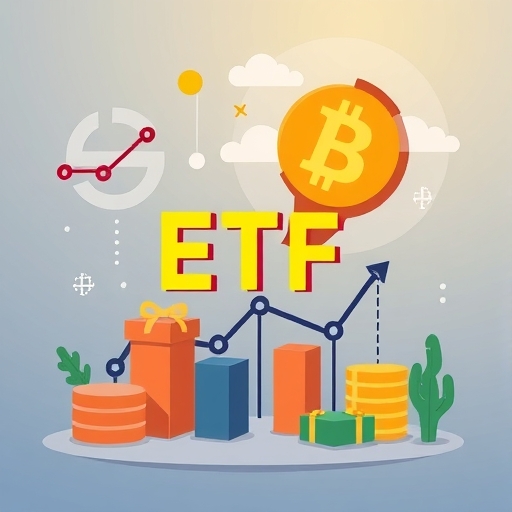
Let’s explore some of these key benefits:
- Diversification: Imagine putting all your eggs in one basket – it’s risky, right? ETFs offer instant **diversification** by providing exposure to a wide variety of investments, market segments, or even entire **asset classes** (like technology stocks, emerging market bonds, or global commodities) with a single purchase. This significantly reduces the **single stock risk** you’d face by investing in just one company. If one company in the ETF performs poorly, its impact on your overall investment is usually minimal because it’s balanced by many other holdings.
- Transparency: Have you ever wondered exactly what your fund holds? With most ETFs, you don’t have to guess. ETF providers typically disclose their holdings publicly on a daily basis. This high level of **transparency** means you always know what you’re invested in, offering clear insight and empowering you to make more informed decisions about your **investment portfolio**.
- Tax Efficiency: One of the often-overlooked but powerful benefits of ETFs is their **tax efficiency**. Due to their unique “creation and redemption” process, ETFs generally incur capital gains taxes only when you sell your shares. Unlike many mutual funds, ETFs often distribute fewer capital gains to investors annually, giving you more control over the timing of your taxes. This means you might keep more of your investment returns working for you over the long term.
- Lower Costs: We all want our money to work harder, and lower fees are a big part of that. Many ETFs, especially those that are passively managed and track an index, often feature significantly **lower expense ratios** and management fees compared to actively managed mutual funds. This cost advantage can compound over years, leading to substantial savings and higher net returns for investors.
- Liquidity and Flexible Trading: As we discussed, ETFs trade like stocks throughout the day. This provides excellent **liquidity**, meaning you can buy and sell shares easily during market hours. This flexibility allows investors to react quickly to market conditions, execute specific **trading strategies**, or simply enter and exit positions more efficiently than with mutual funds.
- Accessibility: ETFs often have lower minimum investment requirements compared to some other investment vehicles, making them highly **accessible** to a broader range of investors. You don’t need a large sum of money to start building a diversified portfolio with ETFs.
Understanding these advantages helps investors leverage ETFs effectively. When considering an ETF, it is also beneficial to look at its investment objective, the assets it holds, and its performance history relative to its benchmark. Critical aspects to review include:
- The ETF’s Benchmark Index: Always check which index the ETF aims to track, as this directly influences its investment style and performance potential.
- Tracking Error History: Evaluate how closely the ETF has historically matched the performance of its benchmark. A lower tracking error is generally preferred.
- Asset Under Management (AUM): Larger, more established ETFs typically have higher liquidity and are less likely to be closed down due to insufficient assets.
- Distribution Policy: Understand if the ETF distributes dividends or capital gains, and how frequently, as this can impact your income and tax planning.
By considering these additional factors, investors can make more informed choices that align with their overall investment strategy.
Navigating the Downsides: Risks and Drawbacks of ETF Investing
While ETFs offer a wealth of advantages, it’s crucial for any smart investor to understand that no investment is without its potential downsides and **risks**. ETFs are powerful tools, but they are not a one-size-fits-all solution, and a clear understanding of their drawbacks is essential for responsible **investment**.
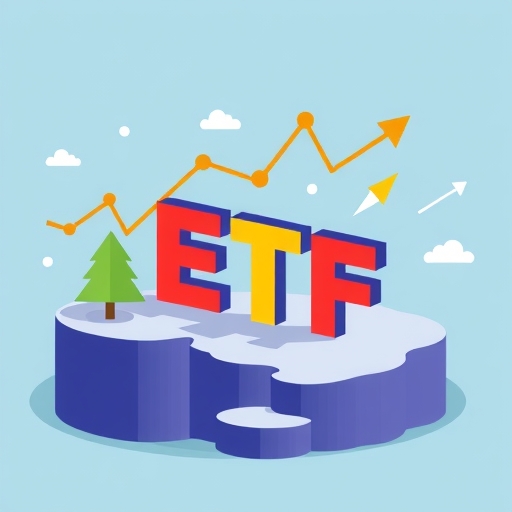
Here are some key risks and drawbacks to consider:
- Trading Costs: While ETFs often boast lower **expense ratios**, remember that you might incur **commission fees** from your broker when you buy or sell shares, just like with individual stocks. However, many brokerage platforms like Charles Schwab and Public now offer commission-free ETF trading, so it’s always worth checking your broker’s fee structure.
- Liquidity Issues: While the overall ETF market is highly liquid, some less frequently traded or very niche ETFs might experience **liquidity issues**. This means you might find it harder to sell your shares at your desired price, especially for funds with low trading volumes or small asset bases.
- Risk of Fund Closure: Although rare for large, popular ETFs, smaller funds with insufficient **assets under management** may close down. If an ETF closes, investors are forced to sell their shares prematurely, potentially at a loss, regardless of their long-term investment strategy.
- Market Risk: Like all investments tied to the stock market, ETF values fluctuate with the performance of their **underlying assets** and broader **market conditions**. If the market or the specific sector an ETF tracks experiences a downturn, the value of your ETF will likely decrease. **Diversification** helps mitigate some risks, but it does not guarantee profit or protect against loss.
- Inflation Risk: Over time, the purchasing power of money can be eroded by rising prices, known as **inflation**. The value of an ETF’s assets, and therefore your investment, can be negatively impacted by inflation if the returns do not keep pace with the rising cost of living.
- Credit Risk: If an ETF holds **bonds** or other debt instruments, it can be exposed to **credit risk**. This is the risk that the companies or governments issuing those bonds may face financial difficulties or even bankruptcy, potentially leading to losses for the ETF.
- Tracking Error: Most passively managed ETFs aim to perfectly replicate the performance of their benchmark **index**. However, due to various factors like fees, trading costs within the fund, or the liquidity of underlying assets, an ETF’s performance may not perfectly match that of its index. This deviation is known as **tracking error**.
- Complexity and Suitability: The vast universe of ETFs includes some highly specialized or complex products, such as **leveraged ETFs** or **inverse ETFs**. These types of funds carry significantly higher risks and are generally not suitable for novice investors or long-term holdings. Understanding the specific design and risks of any ETF before investing is crucial.
While the benefits of ETFs are substantial, a prudent investor always considers potential pitfalls. Here’s a brief overview of common risks associated with ETFs and general strategies to mitigate them:
| Risk Type | Description | Mitigation Strategy |
|---|---|---|
| Market Volatility | The value of the ETF can fluctuate widely with broader market movements. | Maintain a diversified portfolio, invest for the long term, and rebalance periodically. |
| Tracking Error | The ETF’s performance may deviate from its target index. | Choose ETFs with a proven track record of low tracking error; review the expense ratio. |
| Liquidity Risk (Niche ETFs) | Difficulty in selling shares of less popular ETFs without impacting price. | Stick to highly liquid ETFs with high trading volumes and significant AUM, especially for larger trades. |
| Sector Concentration | An ETF focused on a single sector can be heavily impacted by that sector’s downturn. | Diversify across multiple sectors or consider broad market ETFs. |
Understanding these risks is not meant to deter investment but to empower investors with the knowledge to manage their portfolios more effectively.
A World of Options: Exploring the Diverse Types of ETFs
The beauty of the ETF market lies in its incredible variety. Whether you’re looking for broad market exposure or seeking to target a very specific niche, there’s likely an ETF designed for it. This vast selection allows investors to build highly customized and diversified portfolios tailored to their individual goals and **risk tolerance**.
Let’s explore some of the most common and popular types of ETFs:
| ETF Type | Description | Example Focus | Typical Goal |
|---|---|---|---|
| Stock ETFs | Invest in a collection of stocks, often tracking a specific market index like the S&P 500 or Nasdaq-100. | Large-cap US stocks, global equities | Long-term growth, broad market exposure |
| Bond ETFs | Hold various types of fixed-income securities, such as government, corporate, or municipal bonds. | US Treasury bonds, high-yield corporate bonds | Regular income, lower risk than stock ETFs |
| Sector ETFs | Focus on companies within specific stock market sectors or industries. | Technology, healthcare, energy, consumer staples | Targeted growth, thematic investing |
| Commodity ETFs | Invest in raw goods like gold, oil, natural gas, or agricultural products, sometimes through futures contracts. | Gold, crude oil, silver | Inflation hedge, diversification away from stocks/bonds |
| International ETFs | Provide exposure to foreign stocks and markets, including developed and emerging economies. | European stocks, Asian markets, MSCI World Index | Global diversification, access to foreign growth |
| Bitcoin ETFs / Crypto ETFs | Directly track the price of Bitcoin or offer exposure to the broader cryptocurrency market, often via futures or crypto-related company stocks. | Spot Bitcoin price, crypto mining companies | Exposure to digital assets (high risk) |
| Leveraged ETFs | Aim to amplify the daily returns of an underlying index (e.g., 2x or 3x). | 2x S&P 500 daily return, 3x technology sector daily return | Short-term, aggressive trading (very high risk) |
| Inverse ETFs (Short/Bear ETFs) | Designed to profit from a decline in an index’s value, essentially “betting against” the market. | -1x S&P 500 daily return, inverse oil prices | Short-term hedging or speculation (very high risk) |
| Smart Beta / Factor ETFs | Follow alternative indexing strategies, emphasizing specific investment “factors” like value, momentum, low volatility, or quality. | Value stocks, high dividend yield stocks | Attempt to outperform traditional market-cap weighting |
| Multi-asset ETFs | Invest in a mix of different asset classes, such as stocks, bonds, and commodities, to provide broad diversification within a single fund. | Balanced portfolio of global stocks and bonds | Convenient, diversified asset allocation |
It’s also worth noting that **Exchange-Traded Notes (ETNs)** are sometimes grouped with ETFs due to similar trading characteristics, but they are fundamentally different. ETNs are unsecured debt instruments issued by financial institutions, carrying **credit risk** of the issuer, unlike ETFs which hold actual underlying assets. It’s crucial to understand these distinctions when building your portfolio.
ETFs in Context: Comparing Against Stocks and Mutual Funds
To truly grasp the value proposition of ETFs, it’s helpful to see how they stack up against the other popular investment vehicles you might consider: **individual stocks** and **mutual funds**. Each has its own set of characteristics that may appeal to different investors based on their goals, risk tolerance, and desired level of involvement.
Let’s look at a comparative overview:
| Feature | Individual Stocks | Mutual Funds | Exchange-Traded Funds (ETFs) |
|---|---|---|---|
| Diversification | Very low; concentrated risk in one company. | High; broad exposure to many securities. | High; broad exposure to many securities, similar to mutual funds. |
| Trading Flexibility | High; can buy/sell throughout the trading day. | Low; bought/sold only once a day after market close. | High; can buy/sell throughout the trading day, like stocks. |
| Pricing | Continuous, real-time prices. | End-of-day Net Asset Value (NAV). | Continuous, real-time prices (market price). |
| Costs/Fees | Brokerage commissions per trade (many now commission-free). | Management fees (expense ratios), sometimes sales loads. | Management fees (expense ratios), sometimes brokerage commissions (many now commission-free). |
| Transparency | High; company financial statements, news. | Lower; holdings disclosed monthly/quarterly. | High; holdings often disclosed daily. |
| Tax Efficiency | Can control capital gains by timing sales. | Potentially lower; capital gains distributions can occur annually. | High; generally more tax-efficient due to creation/redemption process. |
| Management Style | Self-directed research and selection. | Often actively managed by a fund manager. | Mostly passively managed (tracking an index), but actively managed options exist. |
| Minimum Investment | Price of one share (can be fractional). | Can be high ($1,000+), but varies. | Price of one share (can be fractional), generally low. |
When considering individual stocks, you’re taking a direct ownership stake in a single company. This offers the potential for significant gains if that company performs exceptionally well, but it also comes with concentrated **market risk** and **credit risk**. If the company falters, your investment could be severely impacted. ETFs, on the other hand, provide a buffer against this volatility through **diversification**, spreading your investment across many companies or assets. While you gain broad exposure, you typically won’t see the explosive gains (or losses) that a single, high-performing stock might deliver.
Comparing ETFs to mutual funds highlights their similarities and key differences. Both vehicles offer **diversification** and professional management, but ETFs generally have an edge in **tax efficiency** and **trading flexibility**. The ability to buy and sell an ETF throughout the day allows you to be more responsive to market movements than with mutual funds, which are only priced once daily. Furthermore, many ETFs, especially the passively managed ones, tend to have lower **expense ratios** than actively managed mutual funds, potentially saving you money over the long run. However, the universe of mutual funds is still larger, offering more niche options that might not yet exist as ETFs. Your choice ultimately depends on your preference for active vs. passive management, your need for intraday trading, and your sensitivity to fees and taxes.
Choosing the right investment vehicle, whether it’s individual stocks, mutual funds, or ETFs, depends heavily on your personal investment philosophy and financial situation. ETFs offer a versatile middle ground, appealing to a wide range of investors.
| Investor Profile | Typical Goal | Suitable ETF Characteristics | Example ETF Type |
|---|---|---|---|
| Long-Term Growth Investor | Capital appreciation over many years. | Broad market exposure, low expense ratios, diversified. | S&P 500 ETF, Total Stock Market ETF, International Equity ETF. |
| Income-Focused Investor | Regular income generation. | High dividend yield, bond-focused, real estate (REIT) ETFs. | Dividend Aristocrat ETF, US Aggregate Bond ETF, High-Yield Bond ETF. |
| Thematic/Sector Investor | Target specific industry trends or sectors. | Concentrated exposure to a particular industry or theme. | Technology Sector ETF, Green Energy ETF, Cybersecurity ETF. |
| Short-Term Trader/Hedger | Profit from short-term market movements or hedge existing positions. | High liquidity, potentially leveraged or inverse ETFs (high risk). | Leveraged S&P 500 ETF, Inverse Commodity ETF (use with extreme caution). |
By understanding your own profile, you can better navigate the vast ETF landscape to find products that align perfectly with your financial journey.
Conclusion
**Exchange-Traded Funds (ETFs)** have undeniably become a cornerstone of modern **investment strategies**, offering a unique and powerful combination of **diversification**, **transparency**, and **cost-effectiveness**. We’ve explored how these innovative financial products work, acting as a basket of **securities** that trade with the flexibility of **stocks** while offering the broad market exposure of **mutual funds**. From understanding their various types—whether you’re interested in **sector ETFs**, **bond ETFs**, or even emerging **Bitcoin ETFs**—to evaluating their distinct advantages and inherent **risks**, we hope this guide has equipped you with a clearer understanding of their place in your **investment portfolio**.
By embracing the principles of informed decision-making and considering your personal financial goals and **risk tolerance**, you can strategically integrate ETFs to align with your long-term objectives. Remember, the investment landscape is always evolving, and knowledge is your most valuable asset.
Frequently Asked Questions (FAQ)
Q: How do ETFs differ from traditional mutual funds in terms of trading?
A: ETFs trade on stock exchanges throughout the day, just like individual stocks, meaning their price fluctuates continuously. Mutual funds, on the other hand, are priced only once a day after the market closes, based on their Net Asset Value (NAV), and can only be bought or sold at that end-of-day price.
Q: Are ETFs suitable for all investors?
A: Many ETFs, particularly those tracking broad market indexes, are suitable for a wide range of investors due to their diversification and lower costs. However, specialized ETFs like leveraged or inverse funds carry significantly higher risks and are generally only appropriate for experienced investors with a clear understanding of their mechanics and risks. It’s crucial to match the ETF type with your investment goals and risk tolerance.
Q: Do ETFs pay dividends?
A: Yes, if the underlying securities within an ETF pay dividends, the ETF typically collects these dividends and then distributes them to its shareholders, usually on a quarterly basis. Some ETFs are specifically designed to focus on high-dividend-paying stocks to provide regular income to investors.
Disclaimer: This article is for informational and educational purposes only and does not constitute financial advice. Investing in Exchange-Traded Funds (ETFs) and other securities involves risks, including the potential loss of principal. Always conduct your own due diligence and consult with a qualified financial professional before making any investment decisions.


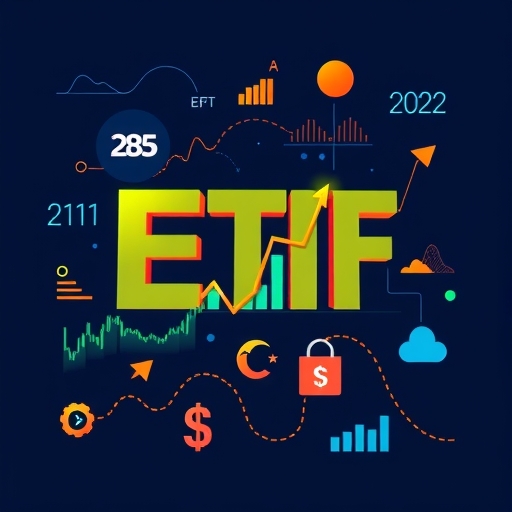
No responses yet